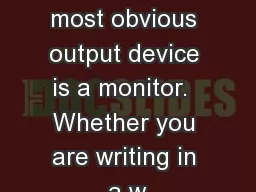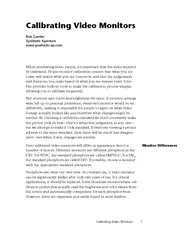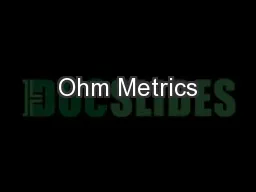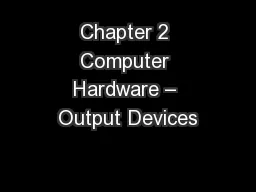PPT-Output device Monitors The most obvious output device is a monitor. Whether you are writing
Author : tatiana-dople | Published Date : 2018-11-18
There are two types of monitors 1 Cathode Ray Tube CRT and 2 Flat Panel Display which uses LCD Liquid Crystal Display or Plasma screens Monitor CRT At the back
Presentation Embed Code
Download Presentation
Download Presentation The PPT/PDF document "Output device Monitors The most obvious ..." is the property of its rightful owner. Permission is granted to download and print the materials on this website for personal, non-commercial use only, and to display it on your personal computer provided you do not modify the materials and that you retain all copyright notices contained in the materials. By downloading content from our website, you accept the terms of this agreement.
Output device Monitors The most obvious output device is a monitor. Whether you are writing: Transcript
Download Rules Of Document
"Output device Monitors The most obvious output device is a monitor. Whether you are writing"The content belongs to its owner. You may download and print it for personal use, without modification, and keep all copyright notices. By downloading, you agree to these terms.
Related Documents














